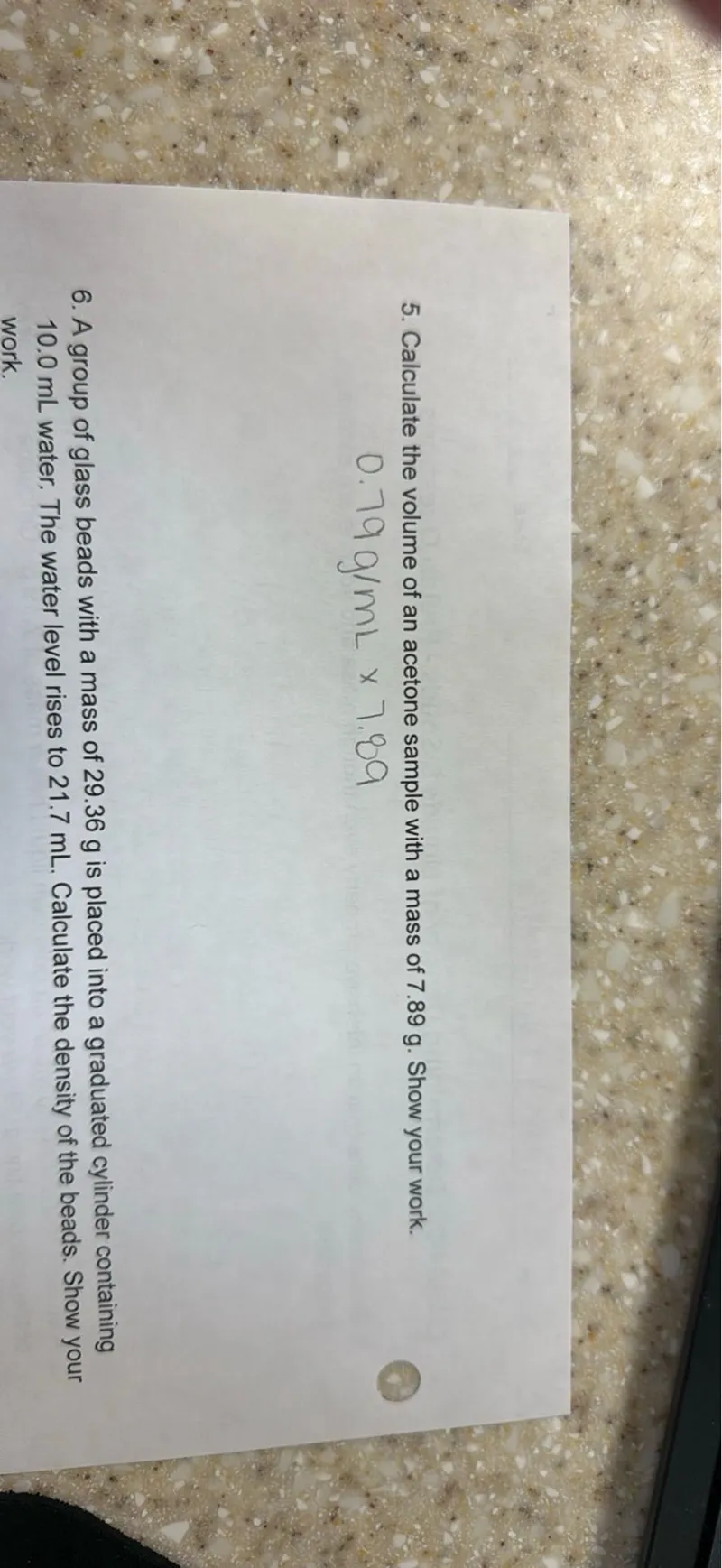Questions: 5. Calculate the volume of an acetone sample with a mass of 7.89 g. Show your work. 0.79 g / mL x 7.89 6. A group of glass beads with a mass of 29.36 g is placed into a graduated cylinder containing 10.0 mL water. The water level rises to 21.7 mL. Calculate the density of the beads. Show your work.

Transcript text: 5. Calculate the volume of an acetone sample with a mass of 7.89 g . Show your work.
$0.79 \mathrm{~g} / \mathrm{mL} \times 7.89$
6. A group of glass beads with a mass of 29.36 g is placed into a graduated cylinder containing 10.0 mL water. The water level rises to 21.7 mL . Calculate the density of the beads. Show your work.





